Rural Fiber Construction: 3 Aspects for Innovative Connectivity
Rural Fiber Optic Construction plays a crucial role in bringing high-speed internet connectivity to underserved and remote areas. National OnDemand collaborates with utility companies, electric cooperatives and Internet Service Providers to deploy fiber broadband networks across rural America. These efforts aim to bridge the Digital Divide by providing reliable internet access to every rural home and business.
Let’s focus on three areas that are key aspects in the direction of rural fiber construction, which are cooperative efforts, real-world examples and community connect grants, which provide financial assistance to eligible applicants that will provide broadband service in rural, economically-challenged communities where service does not exist. One example of this is the East Texas project National OnDemand was part of.
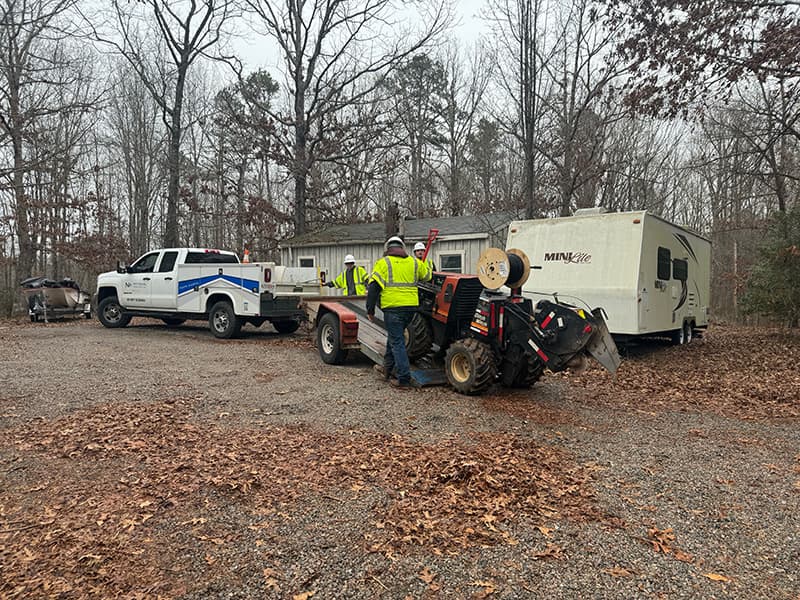
There are several stages in the process:
Rural Fiber Construction Feasibility Study:
A feasibility study helps determine whether it is financially and technically possible to provide fiber broadband service to every unserved premise in a region. Upon a review and approval of the study, grants can be awarded to support the construction. This is where effective planning begins with an in-depth feasibility analysis. Providing comprehensive and realistic studies ensures successful broadband deployment in a region or area.
Electric Cooperatives (co-ops) have secured funding for federal, state and local sources, totaling more than $2 billion so far.
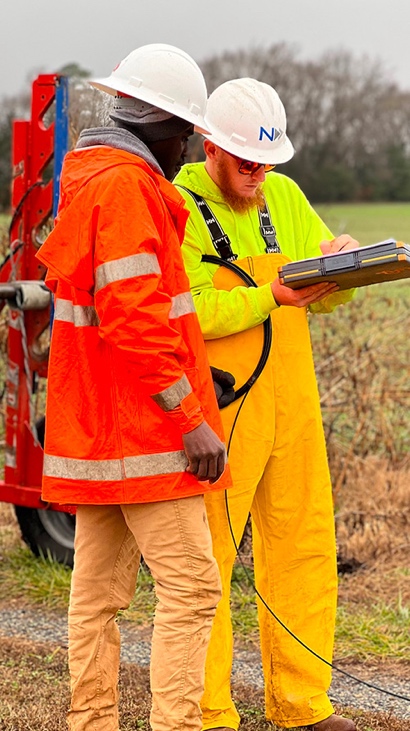
National OnDemand supports the market by assisting clients in building sustainable broadband networks. Research shows co-op clients across the country have benefitted from these efforts, resulting in thousands of miles of fiber built each year. Those efforts have led to 1.1 million rural Americans to enjoy high-speed broadband.
Real-world examples:
The availability of broadband cable has had a significant impact on various communities, influencing them in different ways. Here are some real-world examples:
Rural Development: In many parts of the U.S., the introduction of broadband cable has boosted economic development by connecting isolated areas to the global economy. This development impacts famers, small businesses and residents who will be able to access online services, market their offerings and engage on a 24-hour basis.
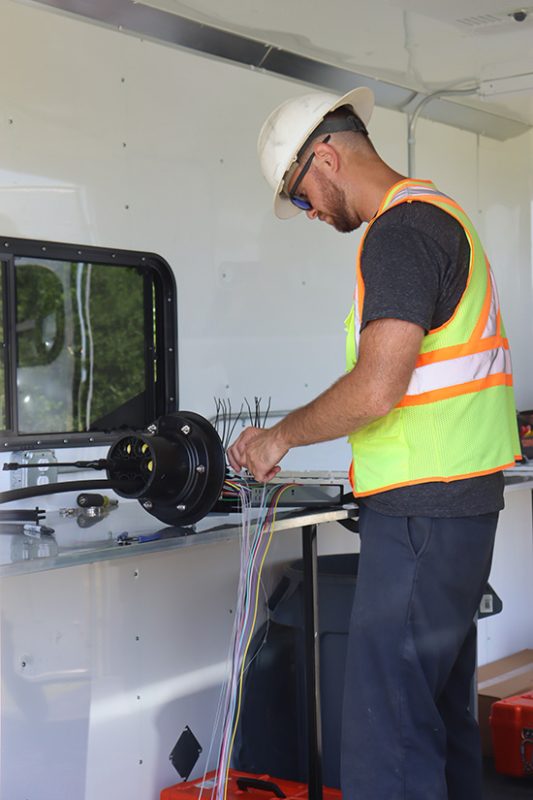
Telemedicine in Remote Areas: Broadband access has allowed the implementation of telemedicine in remote areas. Patients in areas with limited access to healthcare facilities can now consult with doctors, receive medical advice, and even undergo remote monitoring without the need to travel long distances.
Education Opportunities: Broadband has improved the level of educational opportunities in remote or small areas. Students can access online courses, resources, and collaborate with peers globally. This is impactful in rural or underserved areas where traditional educational infrastructure may be lacking.
Remote Work Opportunities: Access to broadband has made it easier for people to take advantage of remote work opportunities. The ability to work from home is now possible for many in isolated areas, which gives an employee more flexibility in terms of a career. Not having to commute to work is a huge deal to a lot potential employees.
Economic Boost: Communities that previously were in severe decline have seen revitalization through having a broadband infrastructure. This much-needed boost has allowed local businesses to compete on a global scale, attracting new investments and creating jobs.
Emergency Services and Public Safety: Broadband connectivity enhances emergency services and public safety in various communities. Quick access to information, real-time communication, and data sharing help first responders coordinate more effectively during emergencies, potentially saving lives and minimizing damage.
These are just a few examples to show how the availability of broadband cable can bring about positive changes, bridging gaps, and empowering communities in different aspects of their lives.
Community Connect Grants
The USDA’s Rural Development offers Community Connect Grants to support the construction, acquisition or leasing of facilities for deploying broadband services. This can include residential and business customers as well as critical community facilities like schools and fire stations. Eligible areas are rural areas that lack any existing broadband speed of at least 10Mbps downstream and 1Mbps upstream are eligible.
Rural fiber construction is a collaborative effort that empowers communities with reliable, high-speed internet access, transforming lives and opportunities in previously underserved areas.
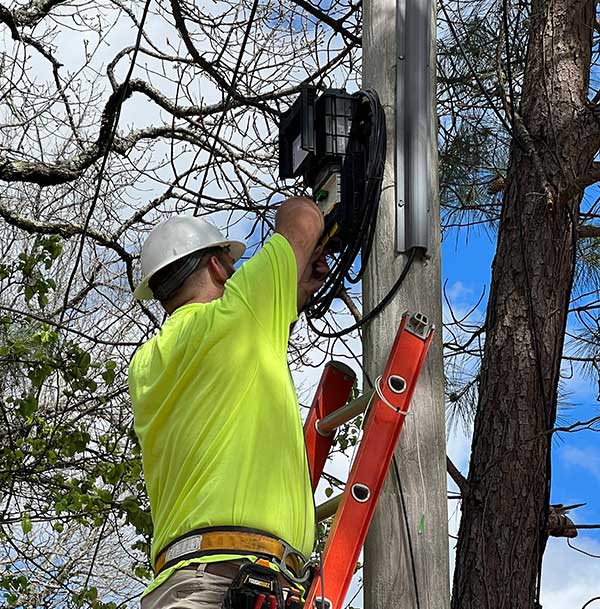
Positive Impacts on Education and Healthcare
- Broadband has benefitted education via distance learning, equal opportunities, digital literacy and homework.
- Reliable broadband enables students in rural areas to access online educational resources, participate in virtual classrooms, and collaborate with teachers and peers. This is especially crucial when physical schools are distant or unavailable.
- High-speed internet ensures that students in rural communities have the same educational opportunities as their urban counterparts. They can engage in e-learning, research, and skill development without limitations.
- Access to broadband fosters digital literacy skills. Students learn how to navigate online platforms, conduct research, and use educational software effectively.
- With broadband, students can submit assignments, access digital libraries, and explore educational content beyond textbooks.
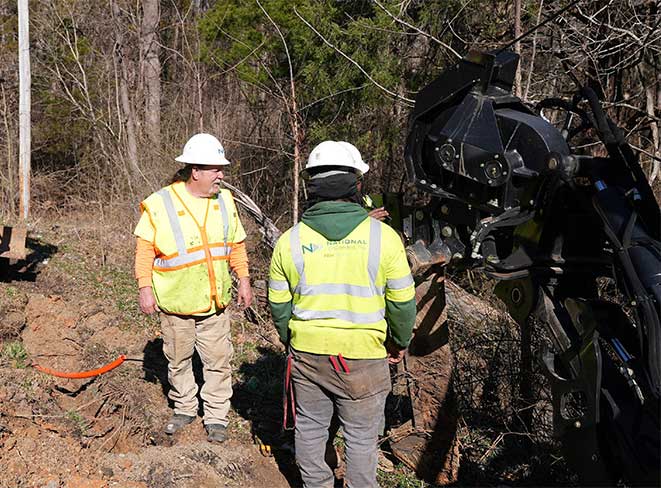
- Broadband has improved healthcare options through telemedicine, response time, and access to specialists and health information.
- Rural broadband facilitates telehealth services. Patients can consult doctors remotely, receive diagnoses, and discuss treatment options via video calls. This is especially vital in areas with limited healthcare facilities.
- High-speed internet enables emergency medical services to communicate efficiently. Paramedics can transmit patient data, receive guidance, and coordinate with hospitals during critical situations.
- Rural residents can connect with specialists without traveling long distances. Telemedicine bridges the gap by allowing consultations with experts in various fields.
- Reliable internet provides access to health-related information, preventive measures, and wellness resources. Patients can stay informed about diseases, medications, and healthy lifestyles.
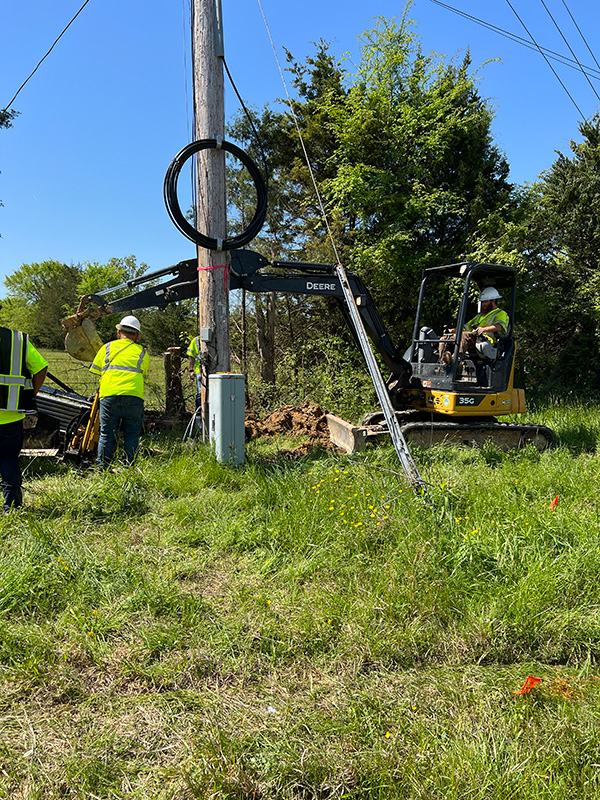
- Rural broadband access enhances education by leveling the playing field and empowers healthcare by improving accessibility and communication. It transforms rural communities by connecting them to essential services and knowledge.
Challenges of Fiber Construction in Rural Areas
Expanding rural broadband access presents both opportunities and hurdles. Let’s delve into some of the challenges faced:
- Building and construction of broadband infrastructure sometimes involves dealing with rough terrain and long distances between homes and businesses.
- Building fiber across rural areas requires great planning and a considerable investment.
- Rural areas often lack the financial resources needed for extensive broadband deployment. Building infrastructure in remote regions can be expensive due to excavation, equipment and labor costs.
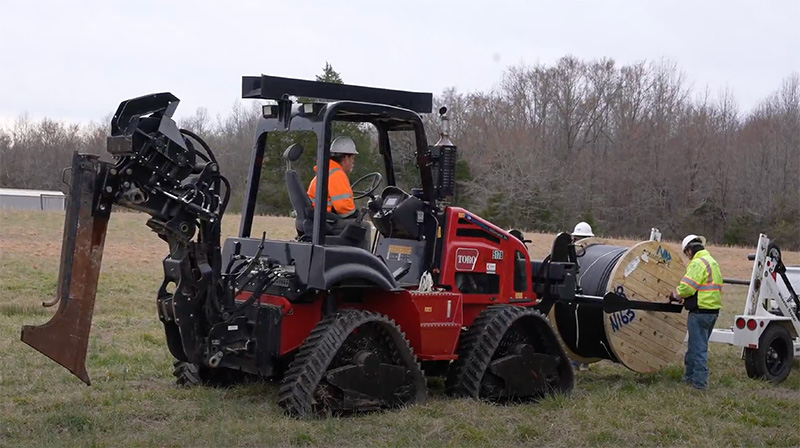
- While federal programs allocate funds for rural broadband, distributing these resources efficiently remains a challenge. Ensuring that the money reaches the right hands and covers underserved areas is crucial.
- Internet Service Providers (ISPs) may hesitate to invest in rural areas due to lower population density. Balancing profitability with social responsibility is a delicate task.
- Obtaining permits for infrastructure installation can be time-consuming. Zoning regulations and environmental considerations add complexity.
- Negotiating rights of way with landowners and local authorities is essential. Disputes over easements can delay projects.
- Digital literacy and adoption are underway as rural residents may lack awareness of the benefits of broadband or face challenges in using digital tools. Promoting digital literacy and encouraging adoption are vital.
- Overcoming skepticism in communities to promote broadband is essential for economic growth, education and healthcare requires outreach and education.
- In some cases, technical limitations slow the process greatly. Often times, the last mile is the challenge.
- Rural networks also may struggle to provide high-speed connections due to limited bandwidth. Upgrading existing infrastructure is necessary.
- Equity and inclusion are also key in bridging the digital divide means ensuring that all demographics, including low-income households, seniors and people with disabilities, have equal access to broadband.
- Involving local communities in decision-making and planning ensures that their unique needs are considered.

Overcoming Rural Fiber Construction Challenges
Despite these challenges, expanding rural broadband is a surmountable task. Collaborative efforts, innovative technologies, and strategic investments can transform rural areas, empowering residents with connectivity and opportunities.
Expanding rural broadband access is crucial for bridging the digital divide and ensuring equal opportunities for all.
A combination of community engagement, regulatory reforms, and long-term fiber goals can pave the way for robust rural broadband access.
How can National OnDemand help tackle those challenges?
National OnDemand can partner with you in conquering the challenges of rural fiber optic construction, even across the most rugged terrains and expansive distances. With our expert project management and innovative approach to construction, we specialize in overcoming obstacles, delivering solutions, and ensuring progress every step of the way.
Navigating through rough terrain or traversing underwater obstacles is no longer a daunting task with National. Our seasoned professionals are equipped with the knowledge and equipment to handle even the most demanding conditions, ensuring the seamless installation of fiber optic networks regardless of the environment.
Here are more ways we can assist you:
Project Management: Our project managers oversee every aspect of the construction process, providing frequent updates on progress and promptly addressing any obstacles encountered along the way.
Permitting Management: From acquiring permits to coordinating with local authorities, we can handle all aspects of permitting to streamline the construction process and minimize delays.
Local Authority Communication: Building strong relationships with local authorities is crucial for successful project implementation. We communicate effectively with relevant stakeholders, ensuring compliance and smooth project execution.
Last Mile Division Services: Our last mile division ensures that your fiber optic network reaches its final destination efficiently, connecting communities and facilitating seamless communication.
Broadband is a necessity, no longer a luxury
Affordable, reliable broadband internet service is fundamental to modern American life. It ensures that rural schoolchildren have equal access to comprehensive educational opportunities and allows rural communities to provide the best health outcomes at reasonable cost to their residents. High-speed internet service stimulates job creation and sparks innovation, enhancing rural economic development.
Broadband is a necessity, no longer a luxury
The U.S. Department of Agriculture (USDA) remains committed to rural broadband expansion, recognizing that it is the digital superhighway for today and tomorrow.
Here are some ways the U.S. government supports rural fiber construction:
The USDA Rural Development Program expands broadband infrastructure in rural areas via loans, grants and guarantees to support modern broadband. The ReConnect Program, introduced in 2018, has invested more than $1 billion to date in expanding high-speed broadband infrastructure in unserved rural areas and tribal lands.
During a visit to Edgecombe, N.C. on Feb. 21, 2024, a Rural Partners Network community, U.S. Department of Agriculture (USDA) Secretary Tom Vilsack and White House Domestic Policy Advisor Neera Tanden announced that USDA is funding 216 projects in 45 states, Puerto Rico, and the Northern Mariana Islands to bring high-speed internet, clean water, state-of-the-art infrastructure and economic growth to rural communities as part of President Biden’s Investing in America agenda.
In July of 2022, the Biden-Harris Administration announced an investment of $401 million to provide access to high-speed internet for 31,000 rural residents and businesses across 11 states. This commitment reflects a focus on rural infrastructure and affordable high-speed internet for all.
There are also great economic benefits in play. Rural broadband isn’t a luxury anymore. It is essential for safeguarding America’s economic competitiveness. It impacts productivity, education, healthcare and public safety. Solid internet connections are crucial for rural businesses to buy and sell products, process transactions, and post job opportunities. Employers need broadband access for specialized training and professional development resources.
Without robust home-based connections, rural schoolchildren face challenges accessing digital resources and often rely on public “hotspots” for online activities. Access to medical services, including telemedicine, is limited where broadband is deficient, creating more burdens on rural patients.
The U.S. government recognizes the urgency of closing the digital gap in rural America and continues to invest in broadband expansion to ensure equal access to opportunity for all citizens.
Conclusion
The Future of Rural Fiber Construction in the U.S. holds significant promise in addressing the digital divide by extending high-speed internet to remote and underserved areas. Collaborative efforts between National OnDemand, utility companies, electric cooperatives, and ISPs are driving the deployment of fiber broadband networks across rural America. These initiatives aim to provide reliable internet access to every rural home and business, thereby bridging the gap in digital connectivity.
Key aspects in the direction of rural fiber construction include cooperative efforts, real-world examples, and community connect grants. Cooperative efforts involve securing funding from federal, state, and local sources to support the design and construction of fiber optic lines, laying mile by mile to connect homes and businesses. Real-world examples showcase ongoing projects like the one in Georgia, where 900 miles of fiber optic lines are being installed to enhance internet speeds and accessibility. Community Connect Grants provided by the USDA’s Rural Development support the deployment of broadband services in economically challenged rural areas.
Rural fiber construction positively impacts education and healthcare by enabling distance learning, telemedicine, and access to specialists and health information. Broadband access enhances education by providing equal opportunities for students in rural areas to engage in e-learning, research, and skill development. Similarly, it improves healthcare options by facilitating telehealth services, enabling remote consultations, and enhancing emergency medical services.
Despite the benefits, rural fiber construction faces various challenges, including terrain difficulties, financial constraints, regulatory hurdles, and technical limitations. However, these challenges are not insurmountable. Innovative solutions such as community-led initiatives, regulatory reforms, and long-term fiber goals can overcome these obstacles and pave the way for robust rural broadband access.
The U.S. government plays a crucial role in supporting rural fiber construction through programs like the USDA Rural Development Program and the ReConnect Program. These initiatives aim to expand broadband infrastructure in rural areas through loans, grants, and guarantees, thereby promoting economic development and ensuring equal access to opportunity for all citizens.
In conclusion, rural fiber construction is essential for safeguarding America’s economic competitiveness, enhancing productivity, education, healthcare, and public safety in rural communities. By investing in broadband expansion, the U.S. government demonstrates its commitment to closing the digital gap and ensuring that all citizens have access to essential services and opportunities.
Partner with National and experience the difference our expertise makes in overcoming the challenges of fiber optic construction. Contact us today to learn more about how we can bring your vision to reality, no matter the terrain or distance.
